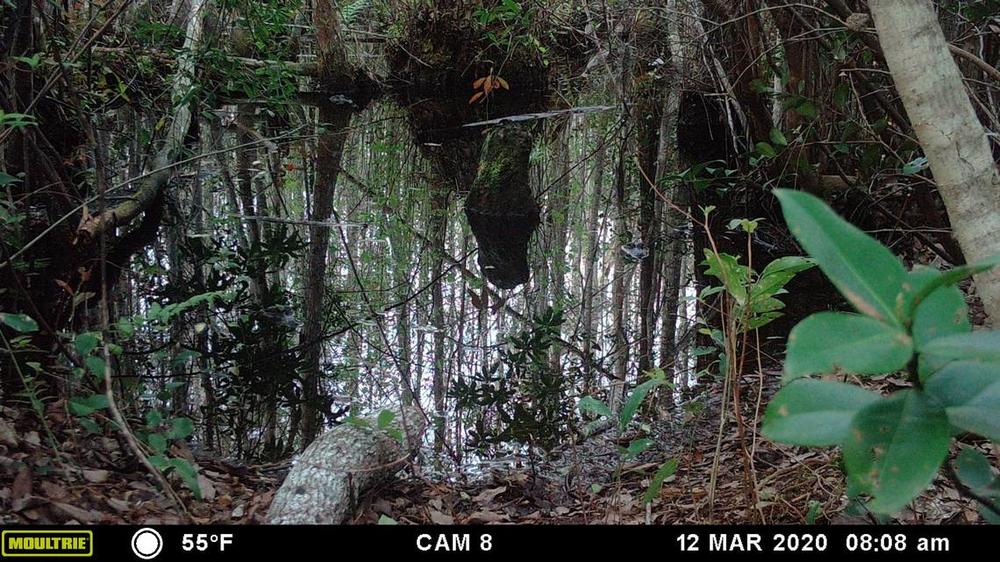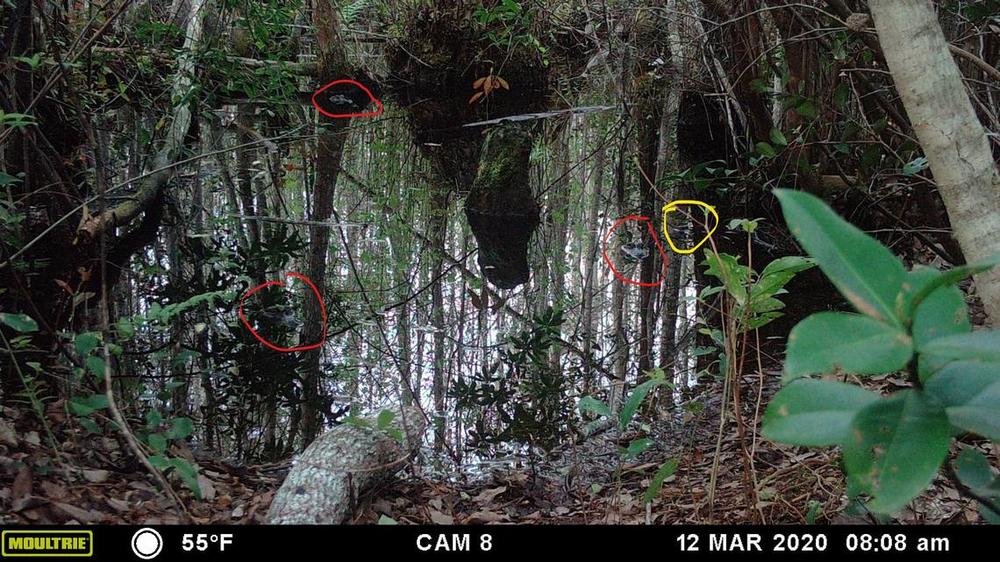
Caption
Can you find the alligators in this Georgia swamp photo? Turns out the dark water is a perfect disguise for the reptiles as they hunt.
Credit: UGA Marine Extension and Georgia Sea Grant Coastal Ecology Lab

Can you find the alligators in this Georgia swamp photo? Turns out the dark water is a perfect disguise for the reptiles as they hunt.
A haunting photo taken in Georgia’s Okefenokee Swamp is proving that even experts can sometimes be fooled by alligators.
The image, taken last winter, was shared on Facebook earlier this month by Georgia’s Coastal Ecology Lab, which challenged people on social media to test their skills.
“The dark water can make it especially difficult to spot alligators, as their dark hide blends in with the black water,” the lab wrote. “There are three juvenile alligators hiding on the black water backdrop. Are you able to find them all?
The lab gave people a week to find them. However, many saw only one gator — sitting neck deep in the water and staring at the trail camera.
But then something unexpected happened. One guy swore he saw four alligators and he circled them and posted the photo on the lab’s Facebook page.
He was right.

The lab circled the four alligators: Red for the three gators it saw and yellow for one a Facebook commenter found.
“There most certainly are four alligators in this photo,” the lab responded. “Thank you for letting us know we missed one. ... This just goes to show how good an alligator’s #camouflage really is.”
Missing an alligator in any swamp is dangerous, but the 438,000-acre Okefenokee is far from average, the U.S. Fish and Wildlife Service reports.
It’s the largest black water swamp on the continent: A 7,000-year-old “peat-filled bog inside a huge, saucer-shaped depression that was once part of the ocean floor.” It is home to countless venomous snakes (cottonmouths and rattlesnakes), biting bugs and even carnivorous plants.
Then there are the alligators. Okefenokee hosts an estimated 10,000 to 13,000 gators (according to Sherpa Guides), and they blend perfectly in water that is heavily stained by rotting vegetation.

Suzie is likely the oldest alligator in the Okefenokee Swamp
Wildlife biologists believe the oldest in the swamp is an alligator named Suzie, who is 60 to 80 years old, according to a March 1 Facebook post. “She is missing her right eye and she has a bulge on the left side of her stomach that causes her to list to one side when she swims,” the lab wrote.
The Coastal Ecology Lab, part of the University of Georgia, is working on an alligator study that involves fitting them with satellite tags for tracking. Lab officials reported in December that the biggest alligator in the study is 11 feet, 5 inches and weighs more than 400 pounds.
This story comes to GPB through a reporting partnership with The Telegraph.